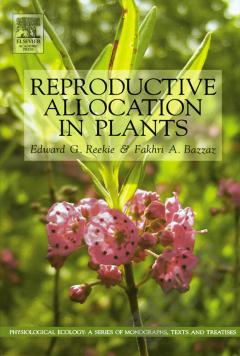Apomixis in Plants
INTRODUCTION. References. APOMIXIS AND PARTHENOGENESIS-A HISTORICAL REVIEW. THE EMPIRICAL BACKGROUND. Early Observations. Mendel on Apomixis. Pioneer Work. Biosystematic and Biogeographic Observations. EARLY THEORIES FOR APOMIXIS. The Necrohormone Theory. The Hybridization Theory. Gustafsson's Monograph. ADVANCES AFTER GUSTAFSSON'S MONOGRAPH. Genetic Background of Apomixis. Advances in Embryology and Cytology. Techniques for Studies of Variation in Apomicts. Apomixis vs. Sexual Reproduction-Progress in General Theory. ASPECTS OF APOMIXIS. Ecological Interest in Apomicts Increases. The Evolutionary Potential of Apomicts. Plant Breeding. PARTHENOGENESIS IN ANIMALS. CLASSIFICATION OF ANIMAL PARTHENOGENESIS. ARTIFICIAL AND OCCASIONAL (TYCHO-) PARTHENOGENESIS. PARTHENOGENESIS AND POLYPLOIDY IN ANIMALS. CYCLICAL PARTHENOGENESIS. EVOLUTION OF PARTHENOGENETIC ANIMALS. COMPARISON BETWEEN APOMIXIS AND PARTHENOGENESIS IN PLANTS AND ANIMALS. PARTHENOGENESIS, APOSPORY AND APOGAMY IN LOWER PLANTS. PARTHENOGENESIS AND RELATED PHENOMENA IN ALGAE. PARTHENOGENESIS IN FUNGI. BRYOPHYTES. APOSPORY AND APOGAMY IN PTERIDOPHYTES. POSSIBLE APOMIXIS IN GYMNOSPERMS. MECHANISMS OF APOMIXIS. SEXUAL AND ASEXUAL REPRODUCTION IN ANGIOSPERMS. EMBRYOLOGY AND CYTOLOGY OF APOMICTIC ANGIOSPERMS. Subdivision and Nomenclature Used in Our Text. On the Quagmires of Apomictic Terminology. "ON THE BORDERLINE OF APOMIXIS". TENDENCIES TOWARDS APOMIXIS IN SEXUAL PLANTS, AUTOMIXIS, ANDROGENESIS, HEMIGAMY. "Apomictic" Tendencies in Sexual Plants. Automixis. Androgenesis. Hemigamy (Syn. Semigamy). HOW APOMIXIS IS REGULATED. GENETIC BACKGROUND OF ESTABLISHED APOMIXIS-FACTS, THEORIES, SPECULATIONS. Background. Components of Gametophytic Apomixis. Early Models for Gene Regulation. Earlier Crossing Analyses. Modern Results and Ideas. Do Obligate Apomicts Occur. Control of Parthenogenesis-Genetical or Not? Diplosporous Apomixis in Taraxacum. Some Other Viewpoints. ENVIRONMENTAL EFFECTS: CLIMATIC CONDITIONS, INFLUENCE OF CHEMICALS, POLLINATION. Temperature, Light, and Other Climatical Factors. Pollination. Chemical Treatments. INCREASING THE VARIATION: MUTAGEN TREATMENT AND TISSUE CULTURE STUDIES. MUTATIONS INFLUENCING THE MODE OF REPRODUCTION. THE ORIGIN OF APOMIXIS. THE BREAKDOWN OF APOMIXIS: HYBRIDIZATION AND POLYPLOIDIZATION. THE INTERRELATIONSHIP BETWEEN APOMIXIS AND OTHER TRAITS. POLYPLOIDY. Apomixis and Polyploidy. Diploid Apomicts. Dihaploids. HYBRIDIZATION. HETEROZYGOSITY/HETEROSIS. SELF-INCOMPATIBILITY. SELF-FERTILIZATION. VEGETATIVE REPRODUCTION. DIOECY. LIFE SPAN. TYPE OF GROWTH. STERILITY. VARIATION AND EVOLUTION OF APOMICTS. THE EVOLUTIONARY POTENTIAL OF APOMICTS. The Lack of Variation View. Accepting Genetic Variation in Apomicts. EMPIRICAL STUDIES. Biometrics. Biochemical Studies of Variation: DNA, Allozymes, Secondary Compounds. FURTHER ASPECTS OF EVOLUTIONARY POTENTIAL. Intraindividual Selection. Phenotypic Plasticity. Recombination and DNA Repair. The Speciation Rate. Sex as a Cohesive Force. EMPIRICAL RECORDS. CONCLUSION. TAXONOMIC CONSIDERATIONS. TAXONOMY-THE PROBLEM WITH CLASSIFICATION. Introduction. Species Concepts. TAXONOMICAL TRENDS. CONCLUSION. SOME THEORETICAL CONSIDERATIONS OF SEXUAL REPRODUCTION AND GENETIC VARIATION. THE PROCESS OF LIVING. Introduction. The Fitness Concept. Cost of Sexual Reproduction. SELECTED HYPOTHESES FOR THE ORIGIN AND MAINTENANCE OF SEXUAL REPRODUCTION. Theories Within POL. Mendelian and Neo-Darwinian Explanations for Sex. ECOLOGICAL IMPLICATIONS OF APOMIXIS. SOME DEMOGRAPHICAL CONSIDERATIONS. TWO GENERAL INTERPRETATIONS OF APOMIXIS. Spreading the Risk of Mortality. Apomixis in Sparse Populations. SOME ECOLOGICAL IMPLICATIONS OF POLYPLOIDY. COMPETITION. Inter- or Intra-Specific Competition? Effects of Competition on the Individual. Competition and the Relative Production of Sexual and Apomictic Seeds. COEXISTENCE. Equilibrium Theories. Non-Equilibrium Theories. Continuous Recruitment of New Clones. HERBIVORY AND APOMICTIC PLANTS. PATHOGENS AND APOMICTIC PLANTS. ECOTYPE DIFFERENTIATION IN APOMICTIC PLANTS. The Process. The Raw Material-Genetic Variation. Effects of Apomixis on Gene-Flow. Effects of Apomixis on Genetic Drift. Apomixis and Selection. Apomixis, Phenotypic Plasticity and Response to Selection. Some Aspects on the Relation Between Apomixis and Natural Selection. ASPECTS OF LIFE-HISTORY PATTERNS IN APOMICTS. Life-Form, Size, Vegetative Propagation and Mobility. Rate of Growth and Development. Reproduction, Sexual System and Pollination. Flowering Time and Phenology. Fecundity, Seed Size and Germination. Habitats of Apomicts. GEOGRAPHICAL TRENDS. PATTERNS OF DISTRIBUTION. Latitude. Distributional Patterns of Apomicts and Amphimicts Within a Species. Levels of Altitude. Occupancy of Glaciated Areas. HISTORICAL ASPECTS-DISTRIBUTION AND AGE OF APOMICTS. General Remarks. Some Examples. Classification of Apomictic Complexes. CONCLUSION. APOMIXIS AND BREEDING. BREEDING APOMICTIC CROPS. Background. Cultivated or Domesticated Species Which Normally Have Apomictic Reproduction. Fruit Trees and Berry Bushes With Apomixis. Fodder Grasses With Apomixis. "Rubber Plants" of Asteraceae (Compositae). USE OF APOMIXIS IN BREEDING CROPS WITH SEXUAL OR VEGETATIVE REPRODUCTION. The Approach "Transfer" Versus "Synthesis". Maize. Rice. Wheat. Barley. Sorghum. Pennisetum. Distant Hybridization in Fodder Grasses. Sugar Beet. Brassica and Raphanobrassica. Strawberry. Apple. Cherry. Pea, Soybean, Alfalfa, and Other Fabaceae. Cotton. Potato. Tobacco. Other Crop Plants. Some Final Words. Literature Cited. GLOSSARY
{{comment.content}}








 京公网安备 11010802027623号
京公网安备 11010802027623号